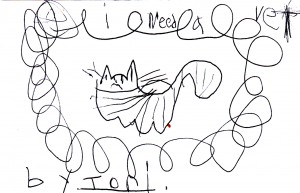 Have you wished you could talk with or recommend a good counselor for children, adolescents, and families? We’ve heard your concerns and are pleased to announce a new hire in Jamie Doty, a Licensed Professional Clinical Counselor, to meet those needs in our community.
Have you wished you could talk with or recommend a good counselor for children, adolescents, and families? We’ve heard your concerns and are pleased to announce a new hire in Jamie Doty, a Licensed Professional Clinical Counselor, to meet those needs in our community.
Jamie’s degrees are from West Virginia University and the University of North Florida. She comes to us after several years of working in non profit mental health centers and her own counseling practice. She’ll fit in well with us, because she wants to be part of a comprehensive pediatric practice that values mental health care.
Keeping the whole family involved in the treatment process is important to Jamie as she focuses on children and adolescents. She creates a space where the client is free to express any thoughts or emotions without the risk of judgment. With adolescents, she understands the need to assist in personal growth by discovering deeper meaning and authenticity in life.
Jamie’s work will be with individuals and families, treating mental, behavioral, and emotional problems and disorders. Anxiety, depression, family counseling, and post-trauma therapies are among her specialties. She uses a variety of therapy styles and techniques to suit the particular situation, including art, play, mindfulness, and cognitive behavioral therapy. While she will not diagnose ADD, patients who have received that diagnosis may be referred to her for counseling.
During her free time Jamie enjoys hiking, camping and traveling with her husband James and her dog iifi.
Thank you for joining us in welcoming Jamie to our practice!
You may call our office to make an appointment with her. Her office hours begin September 4, and she’s available Monday—Friday.


